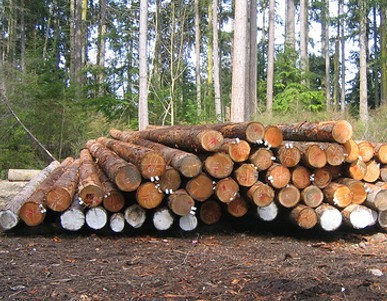
Preparation of the logs that will be used in building a log cabin or home is an important step & it is also essential that the logs be dry enough in order to build with wood that will not twist or bow. Shrinking, cracking, & ‘cupping’; are now actually considered to be myths in terms of what was believed would occur if wood was not dried correctly. As once previously thought, these occurrences are NOT necessarily related to the drying process, but instead, ARE related to the following:
1) The type & characteristics of each kind of wood species, 2) The level of relative-humidity in the location where the logs end up, 3) How quickly the logs are dried, and 4) The thickness of the wood.
There are 2 methods of drying the logs before they can be used for construction. Kiln drying is the process of drying logs & wood in an oven for a period of 24 hours @ 217.4 degrees Fahrenheit (or… 103 degrees Celsius). This is done to reduce the moisture content in the wood more quickly than air drying, as well as having the added benefit of killing insects & any eggs that may be dwelling in the wood; & ‘staining’ is something that can occur if the pitch is not ‘set’ but it is also something that can be reduced by kiln-drying. Kiln drying doesn’t remove all the moisture permanently, wood actually has an ‘equilibrium moisture content’; referred to as “EMC”, and the wood will seek to re-absorb the available moisture to reach it’s former EMC, within a few weeks after the moisture has been removed. Log home building companies use kiln-drying to control temperature & actually add moisture, to avoid the problems that are associated with air drying.
After the drying process is completed, the bark is stripped by hand with drawknives, to keep the rustic qualities or the logs are milled into different shapes according to the preference of the customer. Some people prefer a more uniform log profile, in which each log looks the same as all the others; as opposed to the hand-done style where each log looks unique and resemble the style of log used in an earlier time.
East Grand Lake, Maine - Terms:
- building a log cabin
- how to prepare logs for a cabin
- preparing logs for a log cabin
- how to prepare logs for building
- preparing logs for log cabin
- preparing logs for a cabin
- preparing logs for building
- preparing logs for building by hand
- preparing logs for cabin
- prepare logs for cabin
LOG-CABINS
log cabins